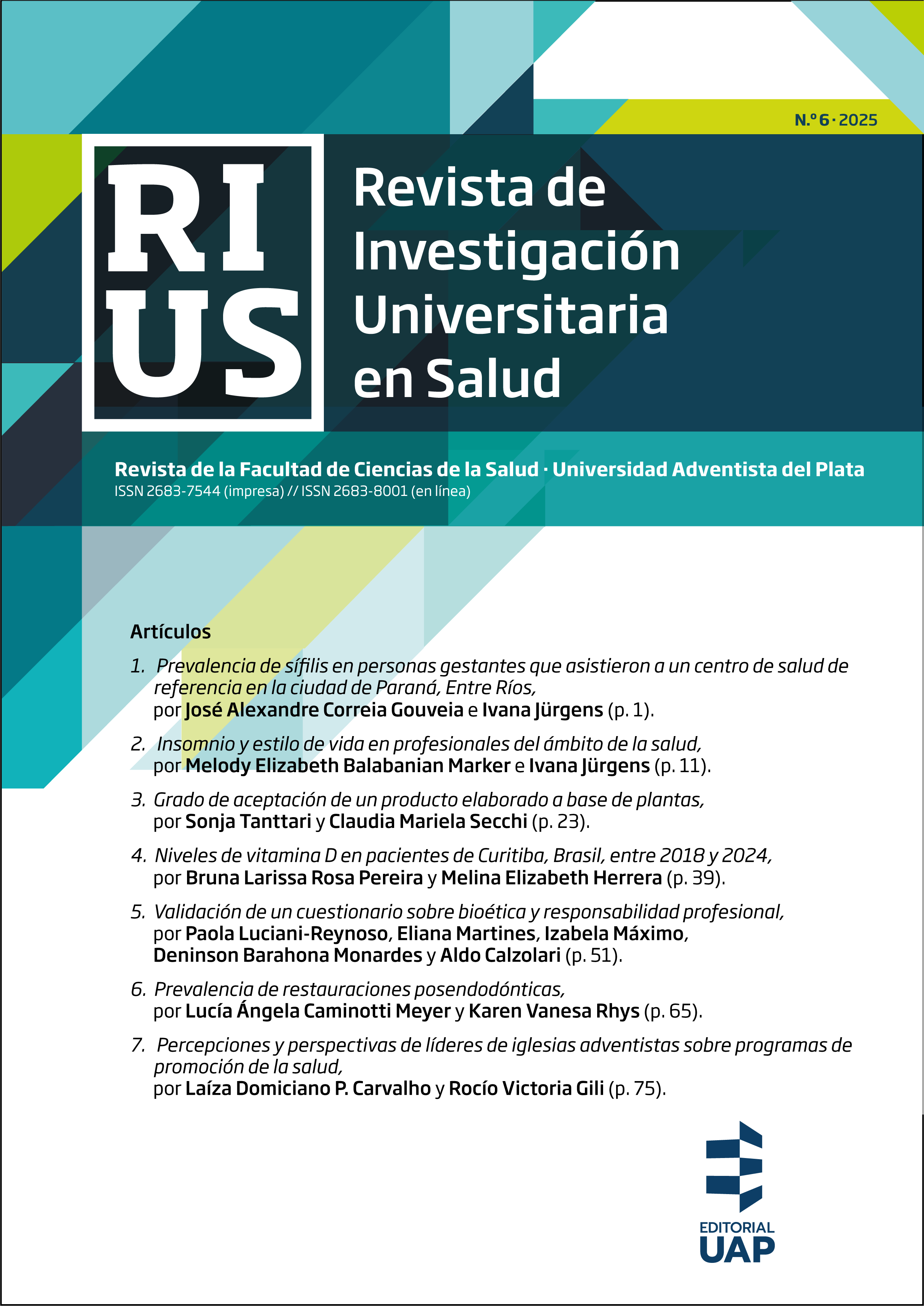Level of Acceptance of a Plant-Based Product
DOI:
https://doi.org/10.56487/zf2cve06Keywords:
Vegetable products — Plant proteins — Plant-based diet — Food analysisAbstract
Introduction. The adoption of a vegetarian diet has become increasingly relevant due to the growing environmental and public health challenges. This highlights the importance of promoting plant-based products that are free from animal-derived ingredients. Plant-based products that provide all essential amino acids are critical for various biological functions and may offer long-term health benefits. However, certain plant-based alternatives may be high in calories and low in essential nutrients. Consumer acceptance of such products is largely influenced by sensory attributes such as taste, appearance, and texture.
Methodology. This study employed a non-experimental, cross-sectional design to assess the acceptance of a plantbased product, free of warning labels and considered a source of protein. It was conducted in the town of Libertador San Martín, Entre Ríos Province, Argentina, in August 2024. The sample consisted of 329 individuals, selected through non-probabilistic sampling. Each participant tasted the product and then completed a five-point hedonic scale.
Results. The plant-based product was high in protein and showed a Protein Digestibility-Corrected Amino Acid Score of 0.94, indicating that it provided all essential amino acids. 97.26% of participants expressed interest in consuming it, and the overall acceptance rate was 95.74% (n=315), with positive responses such as “I really like it” and “I like it.” Flavor was the highest-rated attribute, with a 93.2% acceptance (n=309), followed by texture at 89.05% (n=293), and color at 80.25% (n=264).
Conclusion. The high-protein product achieved a high level of acceptance, mainly due to its flavor, texture, color, and the absence of warning labels.
Downloads
Published
Issue
Section
License
Copyright (c) 2025 Revista de Investigación Universitaria en Salud

This work is licensed under a Creative Commons Attribution-NonCommercial-ShareAlike 4.0 International License.


